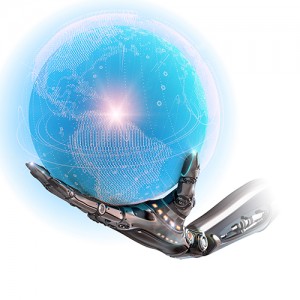 I have been reading a book recently called The Second Machine Age: Work, Progress, and Prosperity in a Time of Brilliant Technologies by MIT researchers Erik Brynjolfsson and Andrew McAfee. In this book, the authors project a future where mankind will work alongside increasingly sophisticated computers and machinery to create a better world. They tell a compelling story about the history of the industrial age leading up to the current technological age and describe our current time as the second machine age.
I have been reading a book recently called The Second Machine Age: Work, Progress, and Prosperity in a Time of Brilliant Technologies by MIT researchers Erik Brynjolfsson and Andrew McAfee. In this book, the authors project a future where mankind will work alongside increasingly sophisticated computers and machinery to create a better world. They tell a compelling story about the history of the industrial age leading up to the current technological age and describe our current time as the second machine age.
Others, however, are not so optimistic about our technological trajectory and where it is leading us economically. In 2003, economist Tyler Cowen wrote a book titled Average Is Over: Powering America Beyond the Age of the Great Stagnation in which he argues that technology has been and will continue dividing workers into two classes. Those workers that are proficient with such technology as computers and robotics will thrive, but those who are not will find themselves unemployed or underemployed. In the author’s defense, he does lay out strategies that can help the latter class to join in the prosperity.
My purpose for this blog post is to start a dialogue and hear your thoughts on the pace of technology changes and how they will affect our future and our economic system. Will technology lead us into a bright future or drive us into perennial unemployment?
The Second Half of the Chessboard
In their book, Brynjolfsson and McAfee refer to another publication, The Age of Spiritual Machines. The author, Ray Kurzweil, draws an analogy between the old story of the emperor and the inventor, and our current technology advancement. In the story, the inventor of chess negotiates with the emperor for payment for this new marvel. He asks only one grain of rice that doubles on each square of the chessboard. The emperor readily agrees, thinking that the inventor is indeed a humble man. By the time they reach thirty-two squares, he is up to 4 billion grains of rice. After that, they reach the second half of the chessboard where things get really interesting and will eventually reach 64 quintillion grains of rice.
This story is based on exponential increase, and the analogy is that we are just now entering the second half of the chessboard. If you thought that the pace of technology advancement was furious in the past, hang on for a wild ride in the future.
Thoughts
The questions still remain—will we benefit from technology or will we be run over by it? Will we be driving the bus or be passengers? I believe that it is up to us and how prepared we are. It is going to take work and constant learning to be in the driver’s seat. What do you think? Are you optimistic or are you worried? Can you keep up? Let me know your thoughts by replying to this post. I hope that we can start a conversation and figure this out together.
 About Kelly Brown
About Kelly Brown
Kelly Brown is an IT professional, adjunct faculty for the University of Oregon, and academic director of the UO Applied Information Management Master’s Degree Program. He writes about IT and business topics that keep him up at night.

